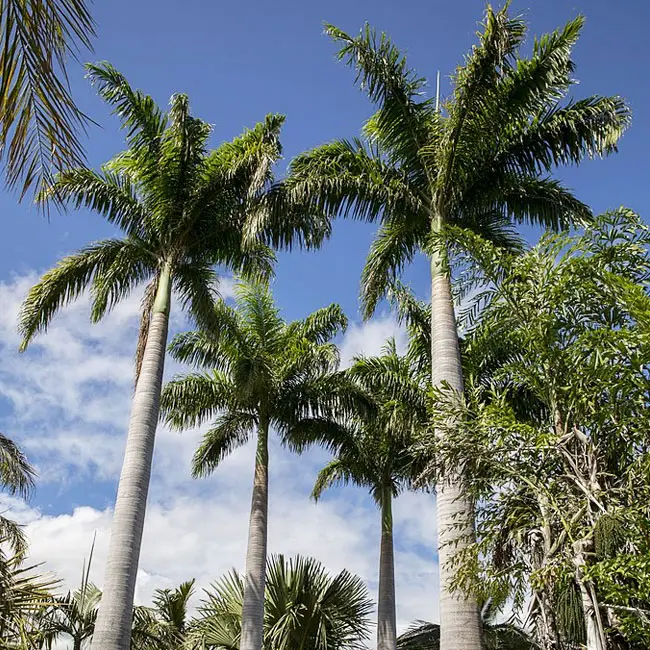
The Royal Palm Tree, scientifically known as Roystonea regia, is native to Cuba and North America. These majestic trees are highly favored in warm, coastal landscapes, especially in southern Florida and parts of California.
They can also be found in the Caribbean, Central and South America, and Texas. The grace and beauty of a Royal Palm make it a popular choice for lining the streets of many cities, and it is one of 14 palm species native to the United States.
These palms are frequently used in the islands of vast parking lots or as medians along highways. Nothing quite exudes a tropical ambiance like the grandeur of a Royal Palm. There are 10 species of Royal Palms around the world.
Quick Facts:
| Scientific name: | Roystonea regia |
| Common names: | Royal Palm, Royal Palm, Cuban Royal Palm, Florida Royal Palm. |
| Origin: | Native to Cuba and North America. |
| Growth Rate: | Moderate. Up to 60 – 70ft tall and 5 -10 ft wide. |
| Cold Tolerance: | USDA Zones 10a (30 to 35 F) to 11 (above 40 F). |
| Light Req: | Full sun to partial shade |
| Water Req: | Moderate |
| Soil Req: | Widely adaptable |
| Fruit: | Yes. Purple-black. Not edible. |
| Propagation: | By seeds, germinating in 2-3 months, sometimes longer. |
Identifying Characteristics of Royal Palm
The Royal Palm boasts a single, smooth gray trunk adorned with scars from old leaves. Its dark green, arching fronds emerge from a vibrant green crownshaft. The pinnate, or feather-like, fronds can grow up to an impressive 6-10 feet in length.
Royal Palm Flowers and Fruits
Fragrant yellow flowers bloom during the summer, while evergreen leaf-blades, ranging from 18 to 36 inches in height, top a lengthy, green crown shaft. Although its purple to black half-inch fruits are showy, they are not edible.
How To Care For Royal Palm
Royal Palms can reach heights of 60 to 70 feet and span 5 to 10 feet in width, with a growth rate of approximately one foot per year. These palms can also be cultivated indoors if provided with sufficient light.
Roystonea regia can withstand cold weather down to 30°F for a brief period, but they are not cold-hardy and should be protected from frost and cold snaps. They thrive best in USDA Zones 10a (30 to 35°F) to 11 (above 40°F).
Royal Palms thrive in full sun and require ample water, although they do possess moderate drought tolerance. This makes them a suitable choice even in areas with watering restrictions. While they appreciate regular watering, proper drainage is essential.
Interestingly, Royal Palms not only tolerate but seem to thrive in the poor soil and limited drainage conditions of urban environments where other trees often struggle.
They can adapt to clay, sand, or loam soil types and are not overly picky in this regard. The Royal Palm prefers slightly acidic to slightly alkaline soil, but excessive alkalinity can lead to frizzled fronds.
To prevent nutritional deficiencies, it is recommended to apply high-quality palm fertilizer with a continuous-release formula twice a year during the growing season.
Propagation of Royal Palms is typically done through seeds.
Royal Palm Insects and Diseases
Royal Palms are generally resistant to many pests and diseases; however, there are a few to be aware of. One potential pest is the Royal Palm bug, which feeds on the young leaves of the tree, causing mature leaves to appear scorched.
These issues are typically more pronounced in early spring but tend to improve by early summer.
Other insect pests may include the palm leaf skeletonizer, which feeds on leaf tissue between the veins, as well as the giant palm weevil and scales, which can also cause problems.
Chemical treatments may be effective, but sometimes these issues resolve on their own. In some cases, removal of infected trees may be necessary, and it’s advisable to consult your local Extension office for the latest information.
Ganoderma butt rot is a fungal disease that can be lethal to infected palms. Unfortunately, by the time symptoms become visible, the tree is already internally rotted, and there is no treatment available. The only option is to remove the affected tree.
Royal Palm Pictures
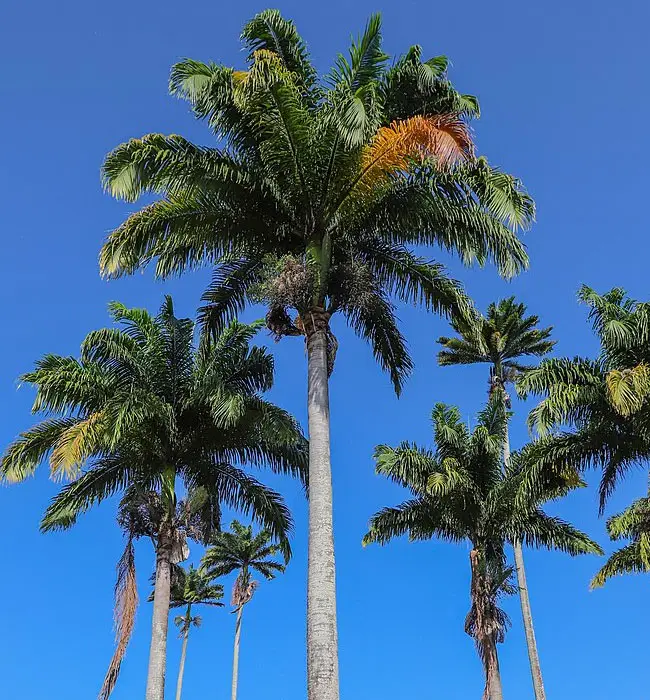
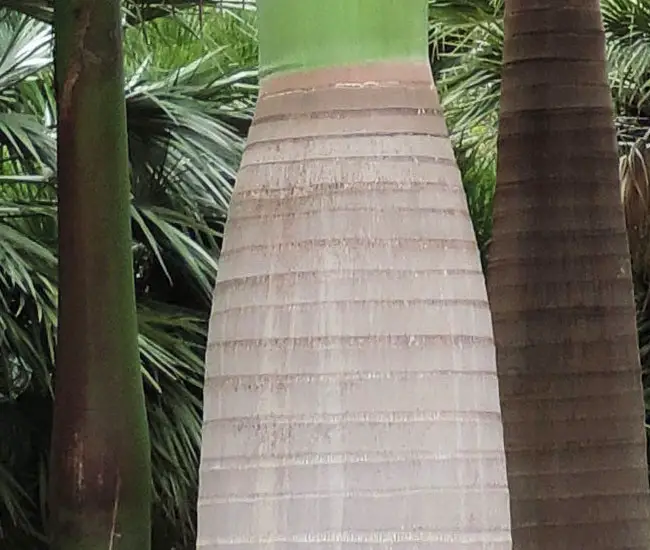
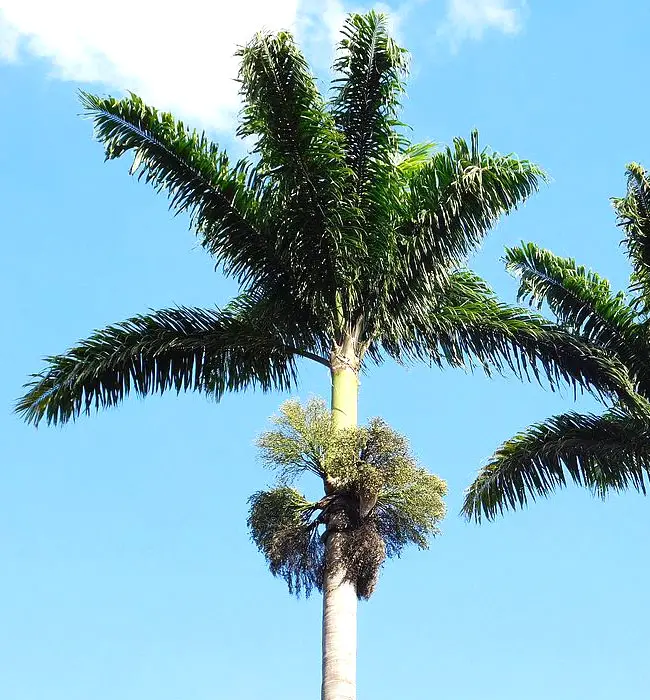
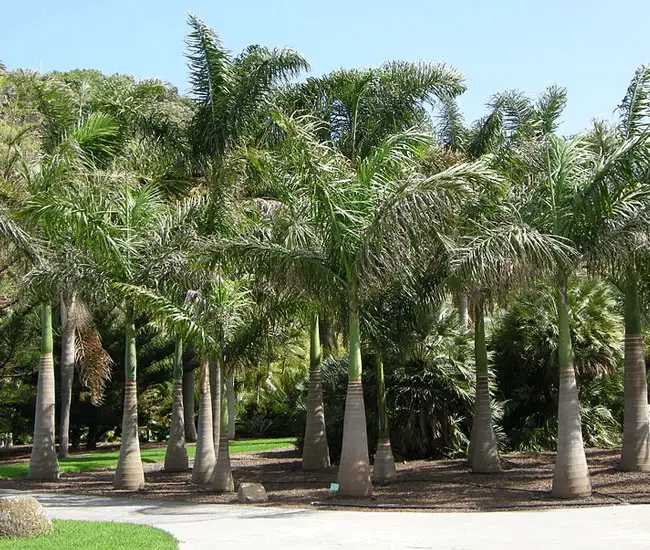
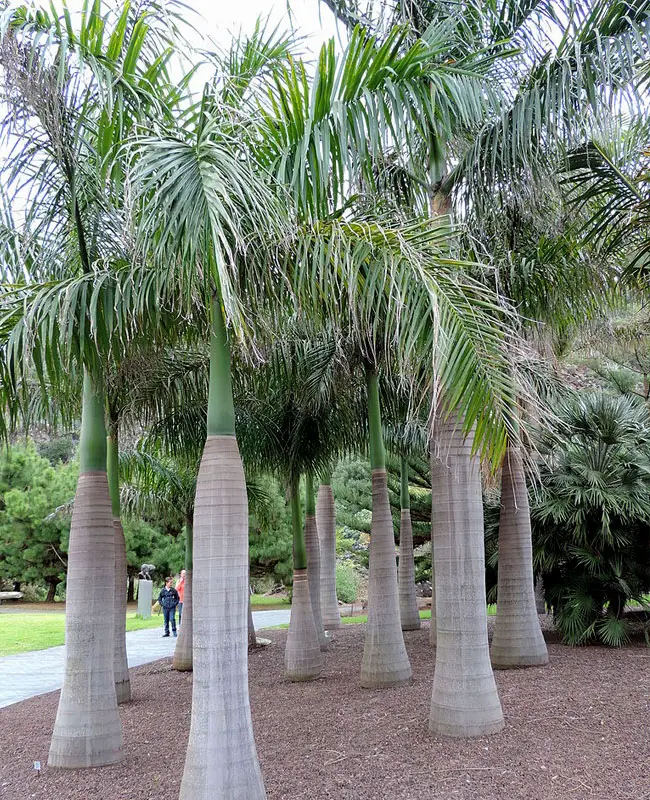

Is it true that when royal palms get big the bark they shed can be a hazard if they fall on someone?